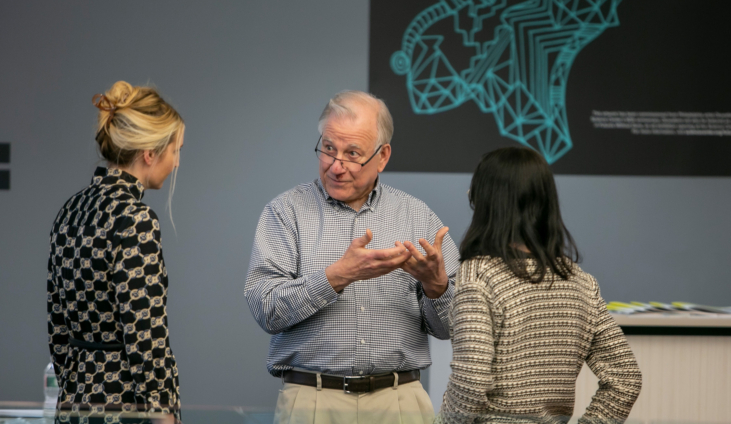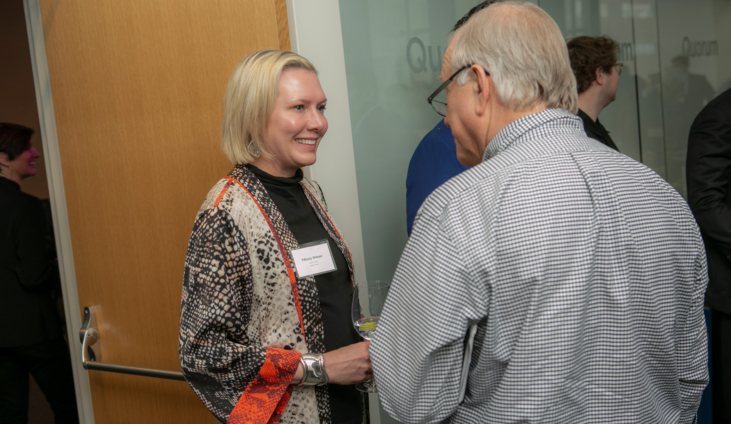Brain surgery has made tremendous advances over the last 80 years, but some important facts remain the same. Bleeding is difficult to control in brain surgery, and even a small post-operative bleed can be fatal. And until now, there has been no fundamental innovation in controlling bleeding in over 75 years.
That’s where Endomedix, Inc. and Richard Russo come in. We first met CEO Richard when he was accepted into Cohort 4 of our Capital Readiness Program (CRP) last March, where he joined nine other companies for five days of intensive learning and feedback for promising healthcare technology startups all seeking their first institutional investments.
“The use of an enzyme, thrombin, to promote coagulation and a matrix to deliver it became the standard of care in 1945 and is used, one form or another, in about 95% of all brain surgeries,” Richard explains. “There hasn't been any new mechanism of action introduced since then. The practice is ripe for innovation."
Endomedix’s device, PlexiClot™ Absorbable Hemostat, is a liquid chemistry sprayed onto the brain during surgery – within seconds, it forms a structured and dynamic hydrogel device. PlexiClot provides new mechanisms of action with both performance and safety that leapfrog the current standard of care.
PlexiClot uses patented features to form a stable clot more quickly, and does not require dangerous physical pressure on sensitive tissues. “We believe that PlexiClot can become a new standard of care for hemostasis in neurosurgical procedures,” explains Richard.
Devices that Save Lives and Save Money
As the Capital Readiness Program instills in its participants time and time again, a successful startup needs to do more than just solve patient problems – it also needs to drive cost savings for the customer, whether it’s a payor or provider. Without a financial incentive, it can be difficult for these would-be customers – which often operate on thin profit margins – to give new technologies a chance.
Hospitals are highly incentivized to innovate when it comes to brain surgery. In addition to concerns over patient outcomes, they lose hundreds of millions of dollars in these procedures from unreimbursed costs due to reoperations, lengthy patient stays, and early readmissions due to bleeding (the Impact Act of 2014 limits what hospitals can charge for a procedure).
Post-operative hemorrhage remains the number one cause of reoperation within 30 days for most brain surgeries. A device that reduces post-operative bleeding associated complications allows patients to heal better and faster - which is good for both patient and provider.
Navigating the byzantine world of medical device regulation is a journey in itself - and Richard is no novice to innovation. This is actually his third experience as a medical device CEO, though it’s the first time that he is funding a venture through the public; the first two had corporate backers.
Richard notes that even for people with serial entrepreneurial experience, there’s plenty of valuable lessons at CRP. “The program is useful for people who are more experienced, just as it’s useful for people who are just getting started for the first time,” he explains. “The group dialog in the sessions puts new perspectives on familiar issues and prompts productive new thinking.”
Richard highlights the day the CRP cohort spent at Independence Blue Cross (IBX) as particularly beneficial. Nate Gach, Director of Innovation at IBX, spoke to the group about the challenges and opportunities they should pay attention to.
“Many of us are very keenly aware of the issues of reimbursement coverage and we may even hire consultants to help us with that, but very rarely do we have the opportunity to actually talk to a payer,” notes Richard. “The day we spent at IBX gave me some insights, and I'm using some of that information to educate my staff and some of our consultants. So it was practical hands-on information that I didn't otherwise have access to, even having done this before.”
Guidance Through the Complexity
CRP sessions are often jam-packed with information – we warn participants to prepare for the “firehose of knowledge” coming their way over the week-long experience. Richard noted that the breadth of information was part of what made each session potentially useful to the wide range of medtech, digital health, and healthcare technology startups.
“We now have nine issued patents so the basics of patents and IP management weren’t particularly germane to us,” he explained, “But the way it was presented had me thinking about doing a better job of training my staff at recognizing patentable advances that are relevant to the major functions of our device.”
Investors-in-Residence form part of the backbone of CRP – for many entrepreneurs, they enable a critical look into what exactly investors are looking for in up-and-coming startups – and also what they’re wary of. Richard notes that even when the program covered topics he was familiar with, the investor perspective allowed him to gain new insight.
“I [realized] that getting early-stage investors is a process of de-risking the project in their mind,” he explains. “Progressive de-risking. When I listened to presenters during CRP I internalized that a little differently, and it’s helping us design the presentation of our program to make sure that we have more clear milestones for value inflection points, to make it easier to raise money - and less likely to fail because you run out of money.”

A Success Story in the Making
It’s been about six months since Richard participated in CRP. So far, Endomedix is making strides on multiple fronts as they prepare to bring their device to market. The European Patent Office recently granted their eighth patent, covering the composition of matter, methods of manufacture, and key features of their device’s mechanism of action.
Meanwhile, the US Patent and Trademark Office issued Endomedix’s ninth patent earlier this month, greatly expanding the scope of protection for their first device, PlexiClot™ Absorbable Hemostat.
The company has also been awarded a grant from the NJ Commission for Science, Innovation, and Technology to support a crucial animal trial. With the third leg of their $4.2 million Seed Round filled, Endomedix has decided to extend its Seed Round up to $4.9 million.
Strategic Next Steps
The road ahead is challenging, but with their groundbreaking technology and strategic guidance from programs like CRP, Endomedix is on track to achieve meaningful success and improved patient outcomes. “I intend to stay involved with the Science Center,” noted Richard. “It’s worth the time spent.”






